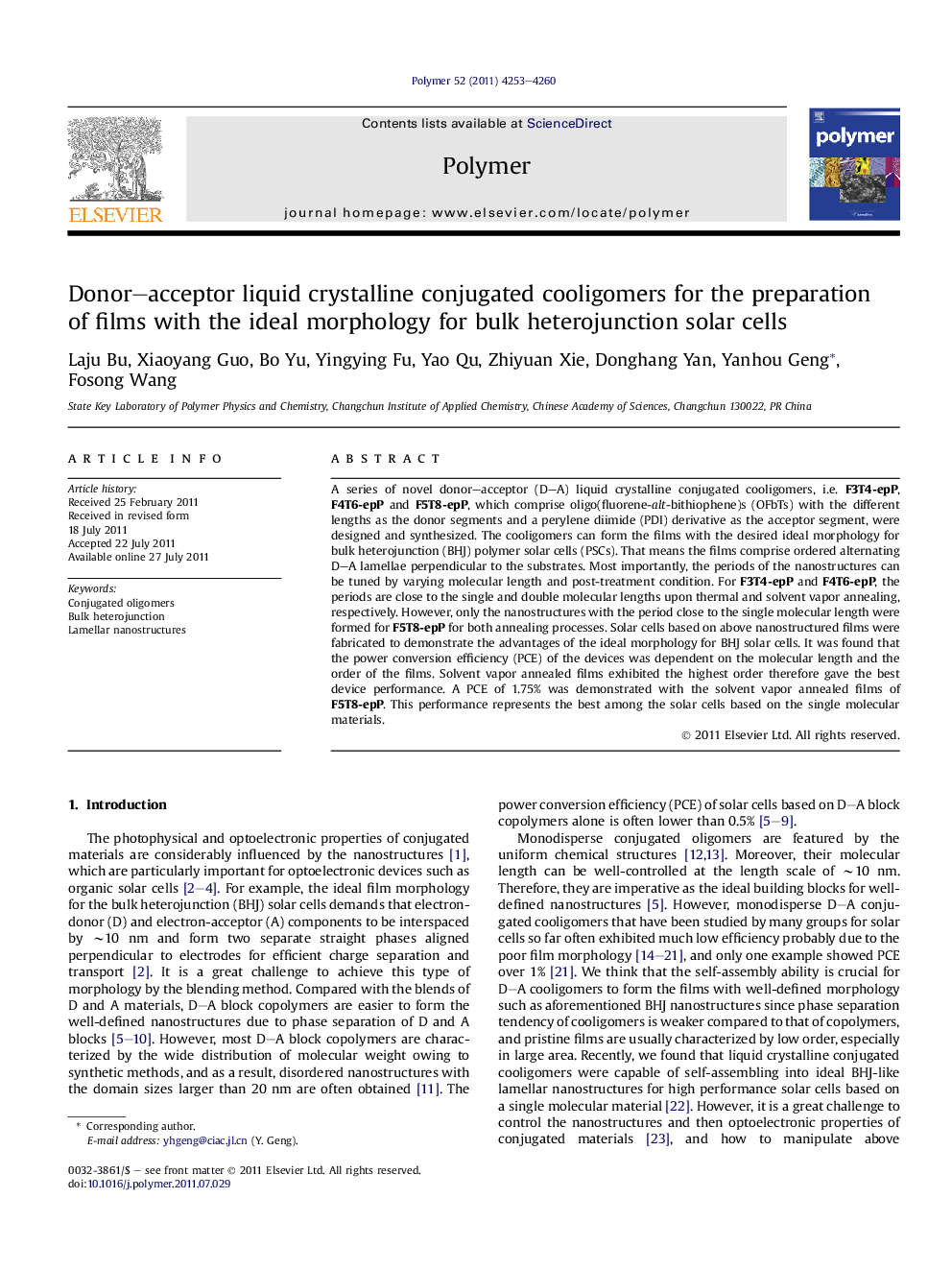| Article ID | Journal | Published Year | Pages | File Type |
|---|---|---|---|---|
| 5184302 | Polymer | 2011 | 8 Pages |
A series of novel donor-acceptor (D-A) liquid crystalline conjugated cooligomers, i.e. F3T4-epP, F4T6-epP and F5T8-epP, which comprise oligo(fluorene-alt-bithiophene)s (OFbTs) with the different lengths as the donor segments and a perylene diimide (PDI) derivative as the acceptor segment, were designed and synthesized. The cooligomers can form the films with the desired ideal morphology for bulk heterojunction (BHJ) polymer solar cells (PSCs). That means the films comprise ordered alternating D-A lamellae perpendicular to the substrates. Most importantly, the periods of the nanostructures can be tuned by varying molecular length and post-treatment condition. For F3T4-epP and F4T6-epP, the periods are close to the single and double molecular lengths upon thermal and solvent vapor annealing, respectively. However, only the nanostructures with the period close to the single molecular length were formed for F5T8-epP for both annealing processes. Solar cells based on above nanostructured films were fabricated to demonstrate the advantages of the ideal morphology for BHJ solar cells. It was found that the power conversion efficiency (PCE) of the devices was dependent on the molecular length and the order of the films. Solvent vapor annealed films exhibited the highest order therefore gave the best device performance. A PCE of 1.75% was demonstrated with the solvent vapor annealed films of F5T8-epP. This performance represents the best among the solar cells based on the single molecular materials.
Graphical abstractDownload full-size image
